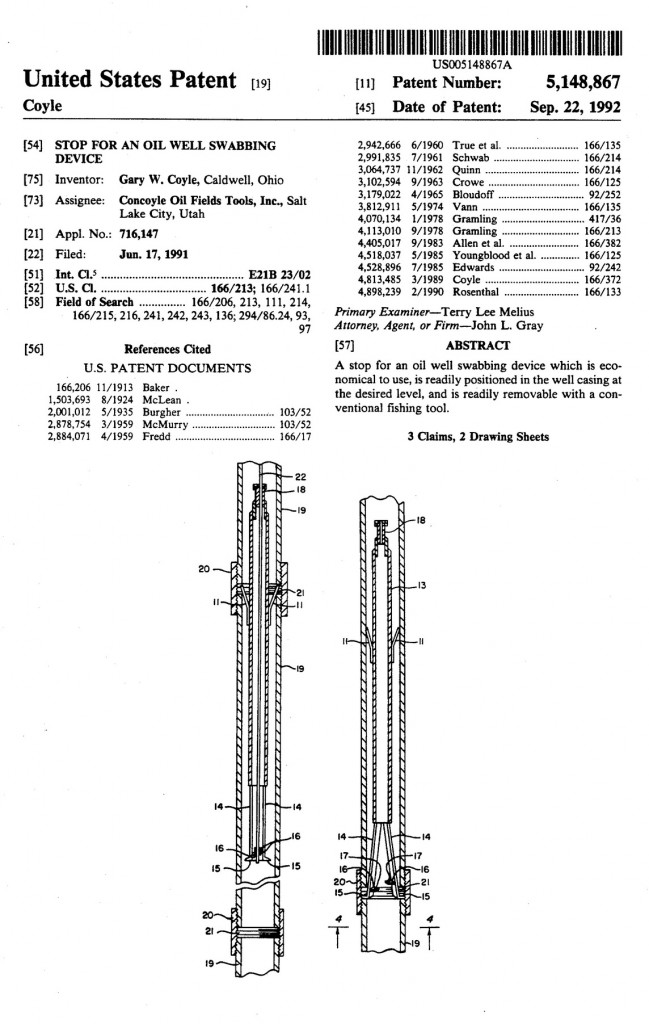In oil drilling, pressurized liquid is used to cool the drilling equipment, move soil and debris out of the oil’s path, and ultimately, force the oil into a path of the liquid’s creation. In order to get the process of oil production officially started or restarted, one must engage in oil well control. One way to do this is to initiate a process called well swabbing. This is done so that the liquids that have pooled in the well during the pressurized liquid “drilling” and “cleaning” will be removed from the oil well and force the oil to gush out due to the pressure build up in the well shaft.
Gas and oil well pumping or swabbing devices to remove oil from an oil and gas well relying on the residual gas pressure in the well to lift the swabbing device and the attendant column of oil thereabove in said oil well casing are exemplified byU.S. Pat. Nos. 4,813,485, Coyle, 4,528,896, Edwards, 4,070,134, Gramling, and 3,179,022, Bloudoff, as well as others. Many of these devices contain a valve which, when open, permits the inherent weight of the swabbing device to cause it to sink downwithin the oil well casing through the accumulated oil and gas therein to a predetermined position near the bottom of the casing, at which time a stop or a pressure sensor will cause the valve to be closed, and as gas pressure builds up underneath theswabbing device, it and the column of oil thereabove will be raised to the surface, at which time the valve will again be opened, either automatically or manually, and the swabbing device will repeat the cycle.There are a number of stops for actuating the valve in the swabbing device disclosed in the prior art, some of which are retrievable. However, many are not. (ref: docstoc.com)
When a well is swabbed a swabbing rig is backed as closely as possible into the production zone. According to Tiger General, “these swabbing rigs normally have a winch with a cable and a foldable mast with a pulley on top. The operator raises the mast and moves it until it is aligned with the center of the well. Next, the operator lowers the cable in and out of the well via the ‘winch drum’.“ This process forces the oil to gush out from the bottom hole as the pressure is increased due to the vacuum created by the process. A batch of pumped out liquid is called a run. An average oil well usually has 6 runs before the oil or gas can properly gush out of the bottom hole.


